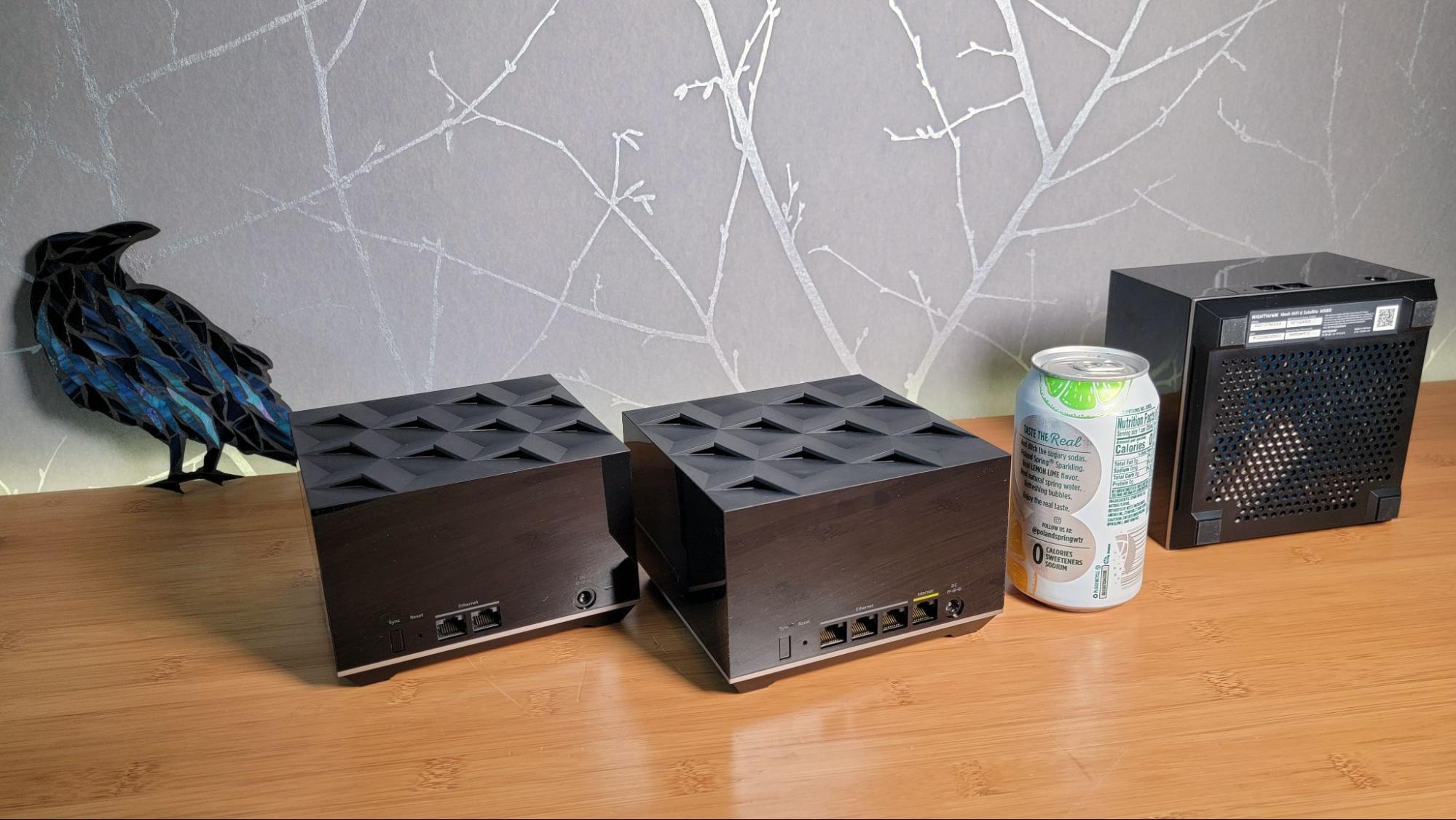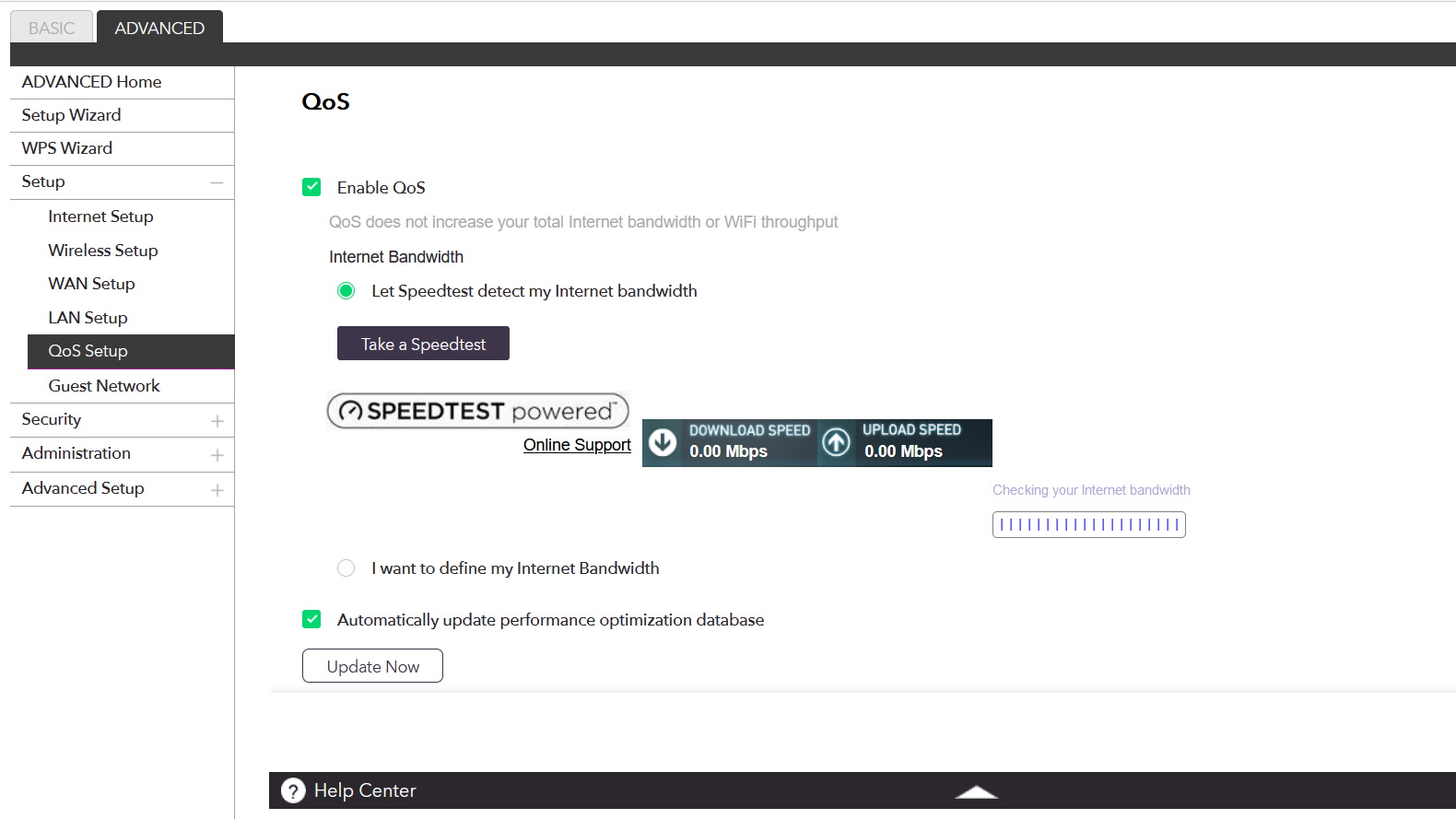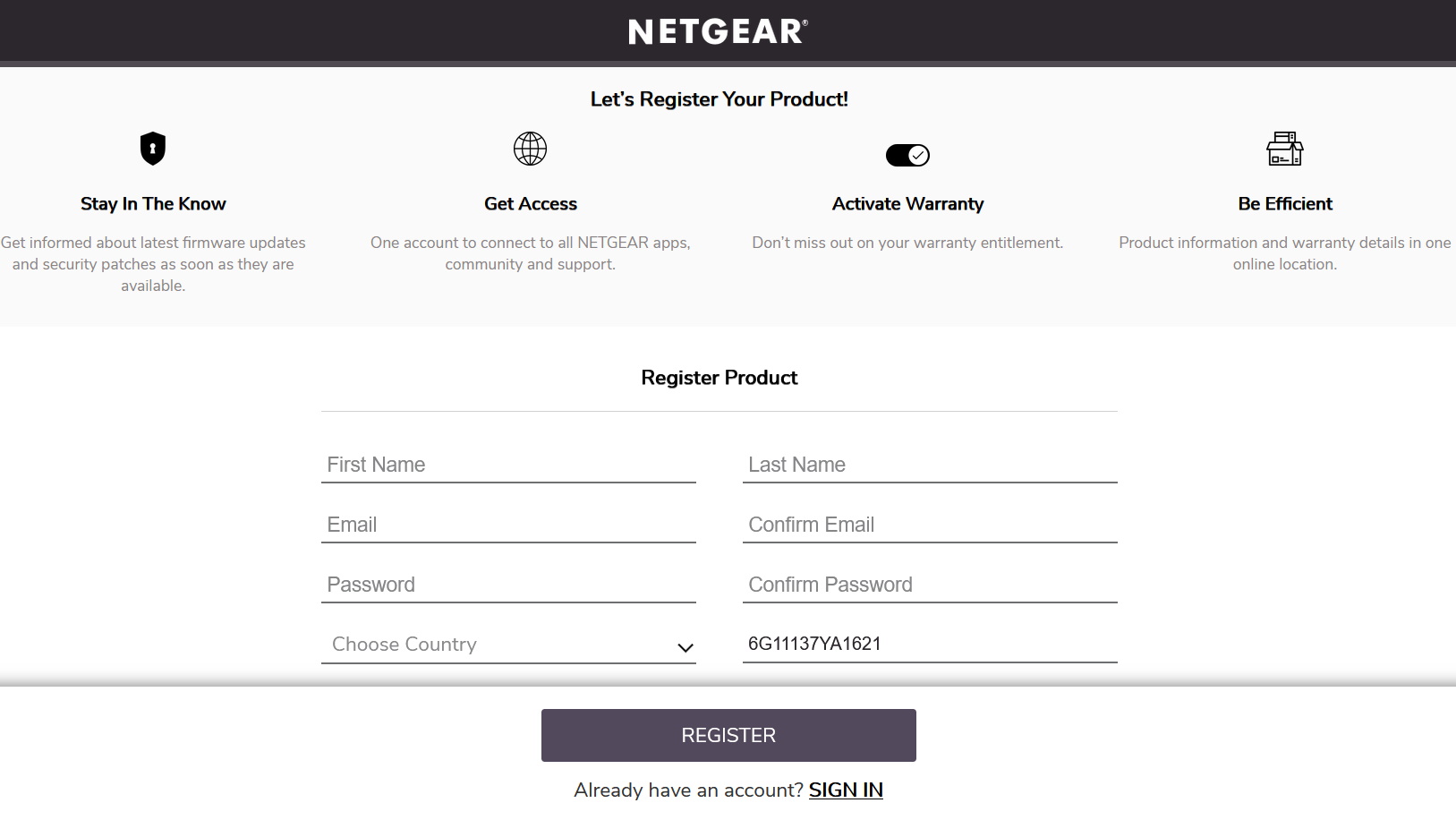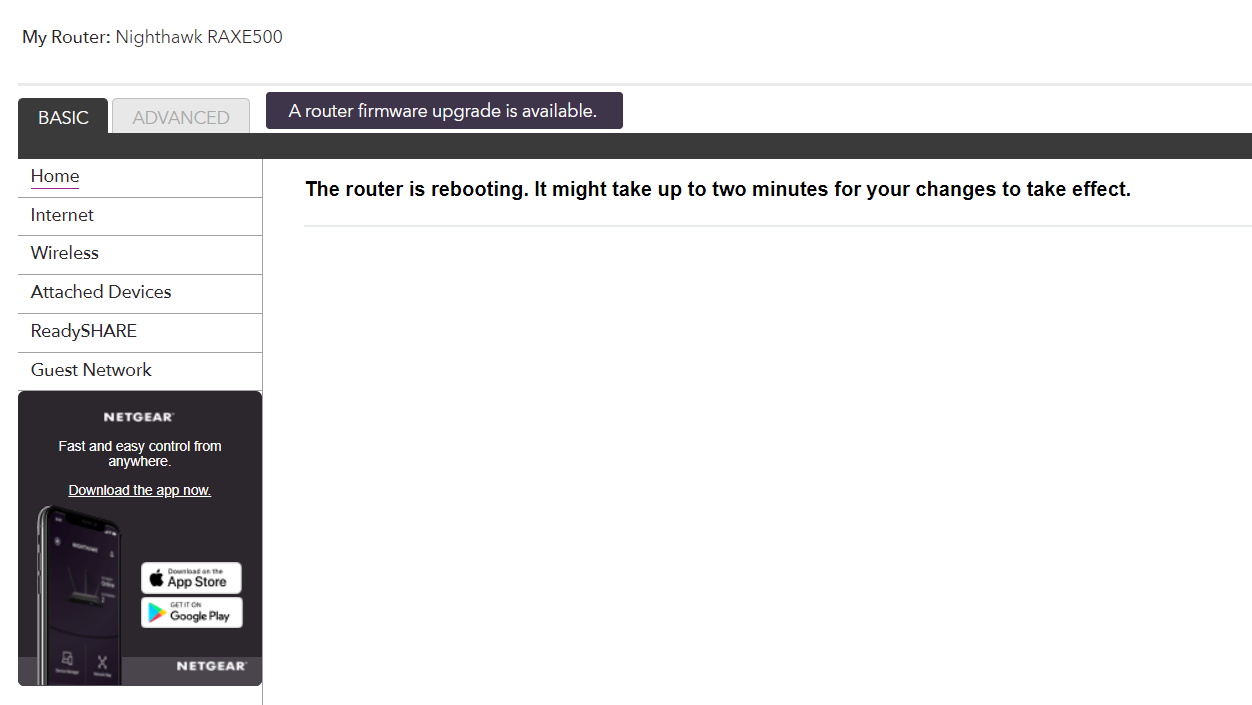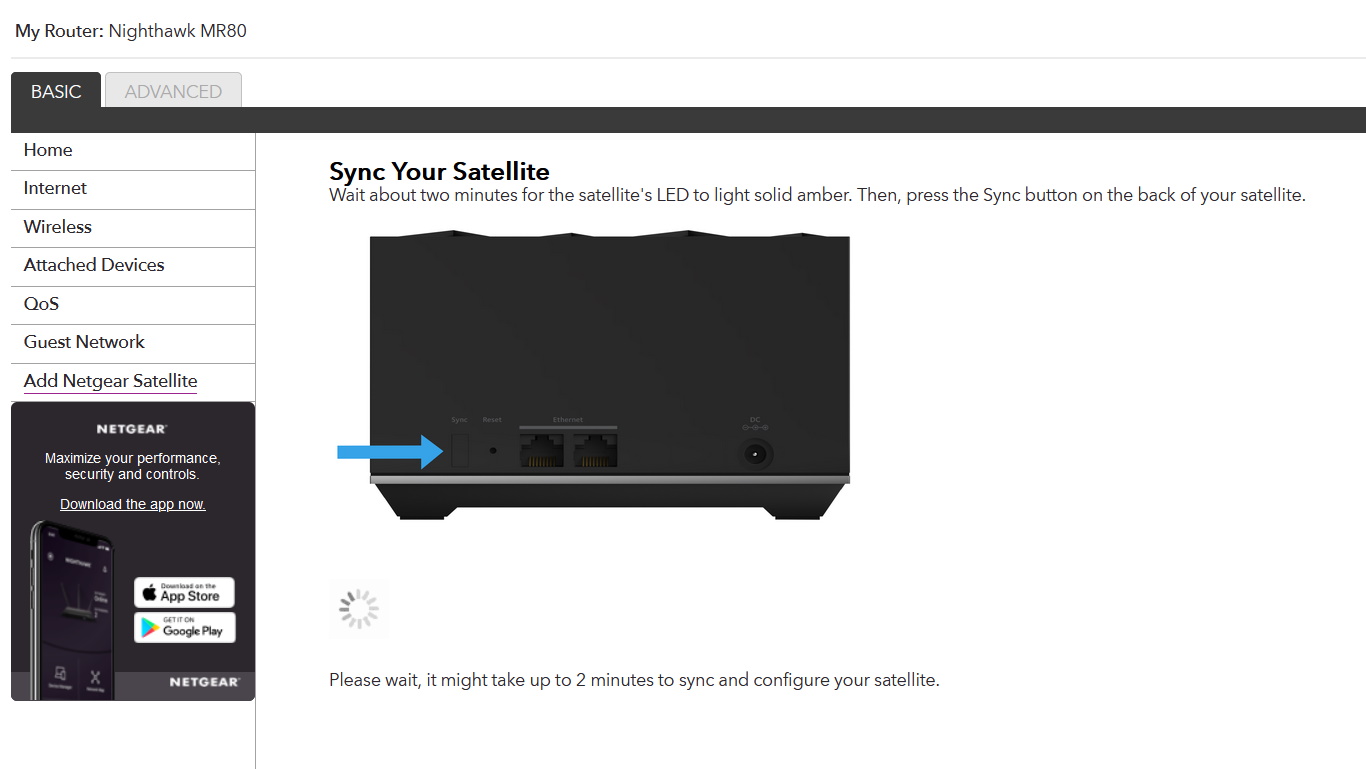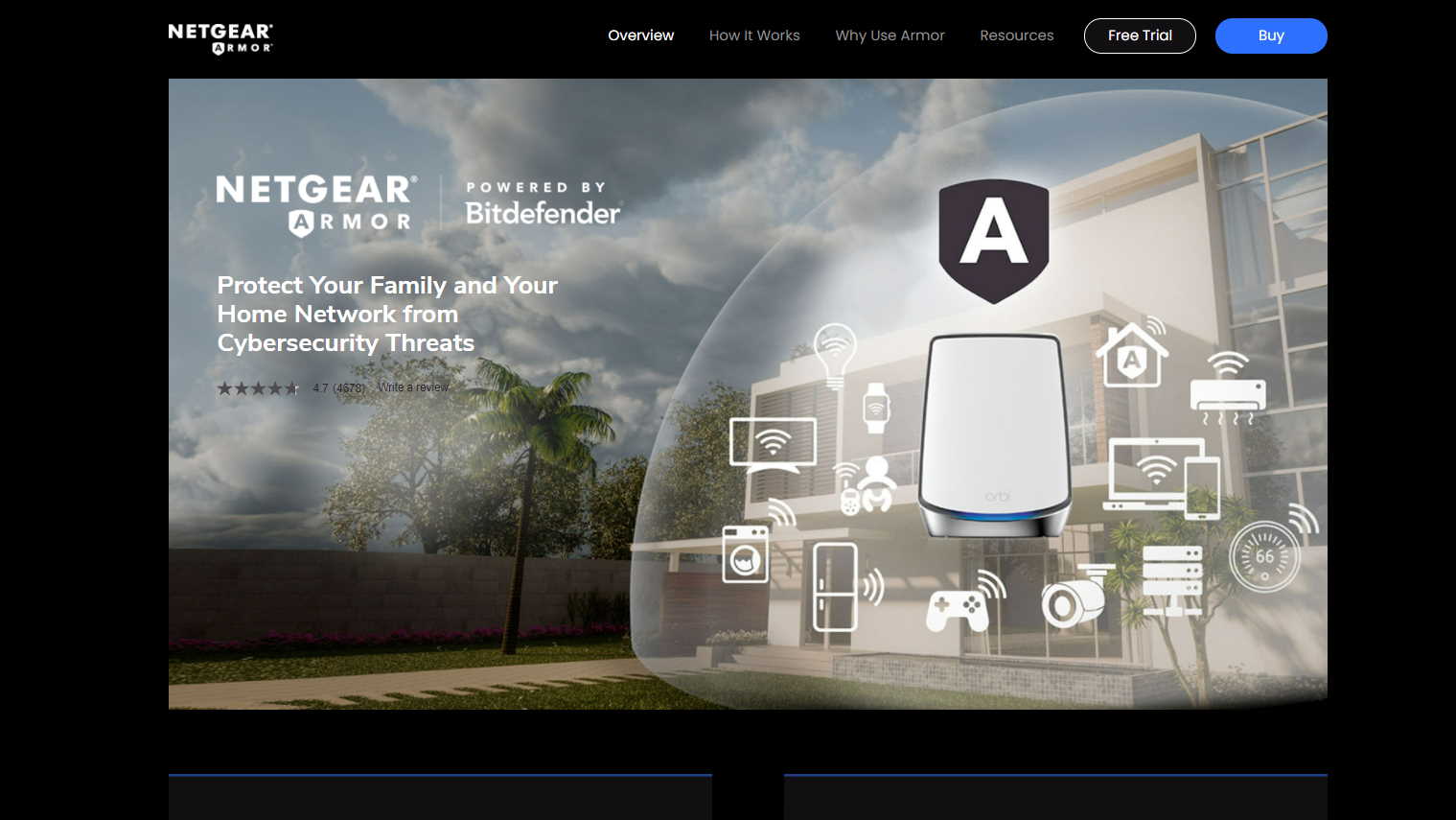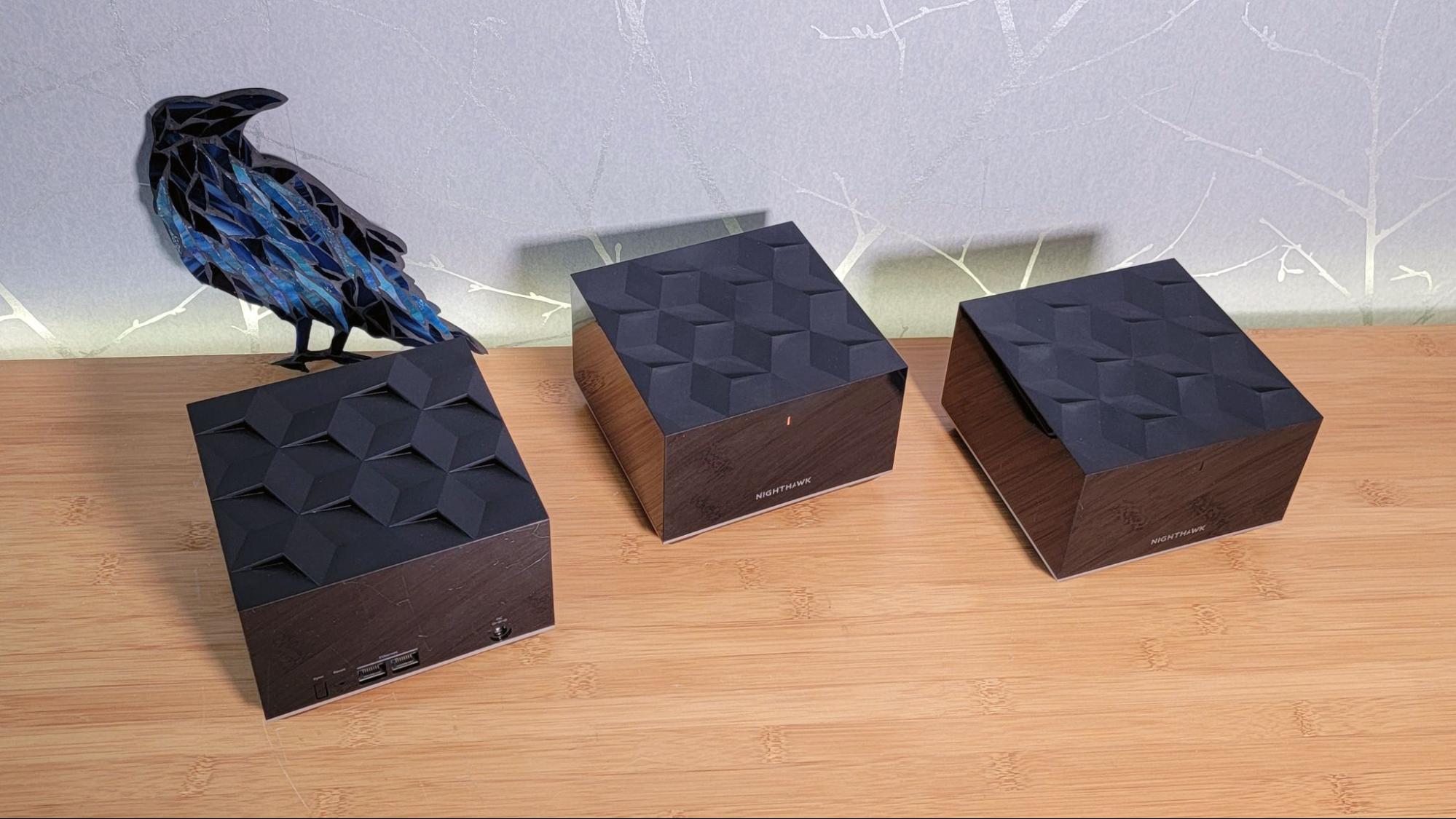Tom's Hardware Verdict
Netgear’s Wi-Fi 6 AX3600 (MK83) brings some nice features to the mesh router arena, plus ease of setup, which is often a shortcoming for mesh gear. However, the additional charge for antimalware and the poor QoS performance, as well as other issues we experienced, means that most users will be better off looking elsewhere for a mesh networking solution.
Pros
- +
+ Compact and easy to set up
- +
+ Abundant Ethernet ports
- +
+ Smooth firmware upgrade
- +
+ WPA-3 support
Cons
- -
Connection issues
- -
Antivirus is an additional charge
- -
Inadequate QoS
- -
LED cannot be turned off
Why you can trust Tom's Hardware
Many locations, be it a multi-story house, an attic office, or an outside patio, present challenges in getting decent wireless coverage. And with the record number of us working and learning from home, a solid Wi-Fi signal has gone from ‘nice to have,’ to the ‘gotta have it’ category. Between streaming media services and Zoom meetings for every occasion from business transactions to birthday parties, dead zones are far less intolerable than they used to be.
There is no shortage of wireless accessories to fix dead spots, including wireless extenders and powerline networks with wireless access points to get the signal where it needs to go. But rather than going crazy trying to get all this gear to play well together, which can be a time sink even for a network expert and a significant challenge for novices, a simpler solution these days (though it’s often far from cheap) is a mesh networking kit. With a mesh kit, the manufacturer has done the heavy lifting, put multiple wireless units in one nice box that are all compatible and designed to work together out of the box,with a single set of directions to get it all up and running.
That’s what we’re looking at with the Netgear Nighthawk Mesh Wi-Fi 6 AX3600 (MK83) system. It consists of three pieces: a router and two satellites, which technically makes it a ‘Hub and spoke’ system rather than the ‘True mesh’ which has all identical wireless nodes. But purist considerations aside, this setup promises to cover 6,750 square feet of wireless goodness with Wi-Fi 6 speeds.
Design
The AX3600 comes as a three- or a four-piece system (we tested the former, MK83), with the option to add additional satellites if you need to cover more space. Each is composed of glossy black plastic sides with a textured top (which reminds me of the classic 80’s arcade game Q*bert), measuring 5.51 x 5.51 x 3.62 inches, with the router and the satellites having identical dimensions, and weighing 1.4 pounds for each of the three units. The glossy plastic tends to pick up fingerprints and smudges easily, so we’d strongly prefer textured plastic here.
The router (center in the image above) has three Gigabit Ethernet ports and a single WAN port. The simple way to tell the router apart from the satellite boxes is that the satellite (above left) has no WAN and just two LAN ports. The latter is a nifty feature to have to connect wired equipment (like set-top boxes or consoles) to the satellite access point.
While there are no external antennas, each unit has five internal antennas. There is a single LED that glows blue when connected, flashes white when booting, and orange when ready to sync. Unfortunately, the light cannot be turned off, making this less than ideal for a bedroom application (unless you want to put a piece of black electrical tape over the LED).
Specifications
Both the router and the satellite units use a 1.5 GHz quad-core processor, and the router has 256 MB of flash memory for storage and 512 MB of RAM. The wireless is tri-band, that is Wi-Fi 6 AX3600 (5 GHz 1800 Mbps + 5 GHz 1200 Mbps + 2.4 GHz 600Mbps). This sums up to 3600 Mbps of theoretical bandwidth, hence the name of this kit, however it strikes us as odd to have two different bandwidths for the 5 GHz radios. Also, it is unclear if one of these is the backhaul between the router and a satellite, which would then be a bottleneck to the faster 5 GHz speed, unless directly connected to the router.
Get Tom's Hardware's best news and in-depth reviews, straight to your inbox.
At least on paper, the AX3600 does have all of the wireless features that you would expect from a higher end piece of home networking gear--the three-piece kit we tested currently sells for just under $400. The list is lengthy, and covers MU-MIMO for simultaneous data streaming, explicit beamforming on both the 2.4 GHz and 5 GHz frequencies, OFDMA for both uplink and downlink and seven-stream WiFi for 4K video streaming.
The AX3600 does have QoS (Quality of Service) that can be toggled on, along with a “Performance optimization database.” We also went through the SpeedTest to identify the available bandwidth, to then have this mesh kit optimize it. That said, there is absolutely no control over the QoS, either by the type of traffic (such as to give video streaming or gaming priority), or to be able to give a specific device priority, such as a gaming rig. We think this deficit in granular control at least partially explains the poor QoS performance below. But first, let’s get the system up and routing.
Setup
Mesh systems can often be a drudgery to set up, but the AX3600 performed well in this area. While it can also be done with a smartphone app, we proceeded via the web interface, and it was pretty painless.
As part of the setup, the system’s firmware was upgraded to the latest available. This is an important step to ensure that the latest patches have been applied and any known security holes have been addressed.
With the router connected and chugging, the next step is to add the satellites to the system. This was easier than most mesh systems, as we just had to plug in the satellite, wait for the flashing white LED to turn orange, and then hit the ‘Sync’ button on the satellite, followed by the ‘Sync’ button in the software, and then the satellite was all configured.
Security
The AX3600 does support WPA-3, the latest encryption standard, which is becoming increasingly important as all the previous standards have been cracked at this point.
The AX3600 does support network level antimalware security, which is termed “Netgear Armor” here. But while there is a free trial, it’s limited to 30 days, even on this top end mesh kit. Beyond that, you’re looking at an annual subscription for an additional cost of $69.99 (although it’s currently on sale for less). Purchasers should factor this into the cost of the AX3600, because some competing products have network-level antivirus for the life of the product without an additional cost.
Performance
Right off the bat, we experienced connection issues. An Acer Aspire laptop we had with a Wi-Fi 6 card (AX201, driver version 22.40.0.7) was completely unable to connect to the router. We did discover that this was not the latest Intel driver for this card, which was subsequently upgraded to 22.60.0.6, but this didn’t solve the problem. Our testing was done with our standard Asus gaming laptop, model G512L, which also uses the same AX201 card, although did not have any connection issues.
| Header Cell - Column 0 | 2.4 GHz near | 2.4 GHz far | 5 GHz near | 5 GHz far |
|---|---|---|---|---|
| Bandwidth (Mbps) | unable | unable | 315.2 | 286.7 |
The AX3600 sends out a single SSID, and we were not able to separate it into separate 2.4 GHz and 5 GHz signals. Therefore, we were unable to test throughput on the 2.4 GHz frequency. The 5 GHz speeds we obtained of 315.2 Mbps on the near test and 286.7 Mbps on the far test are decent, but nothing exceptional among Wi-Fi 6 gear.
Testing Configuration
| Testing Configuration | QoS | FRAPS avg | min | max | 8k dropped frames | Pingplotter spikes | Latency (Overwatch ms) |
|---|---|---|---|---|---|---|---|
| Ethernet | no | 119.8 | 100 | 142 | n/a | 0 | 69 |
| Ethernet + 10 8k videos | no | 36 | 0 | 82 | 16.20% | 6 | 189 |
| Ethernet + 10 8k videos | yes | 20.2 | 2 | 42 | 34.80% | 13 | 124 |
| Router only 5 GHz | no | 126.2 | 103 | 152 | n/a | 0 | 67 |
| Router only 5 GHz | no | 13.4 | 0 | 51 | 3.40% | 1 | 151 |
| 5 GHz + 10 8k videos | yes | 16.1 | 0 | 59 | 50.80% | 1 | 118 |
| Satellite (5 GHz) | no | 136.1 | 107 | 163 | n/a | 1 | 68 |
| Satellite + 10 8k videos | no | 24.9 | 0 | 50 | 9.20% | 0 | 100 |
| Satellite + 10 8k videos | yes | 37.6 | 0 | 90 | 17.80% | 3 | 87 |
Stress testing the AX3600 mesh kit proved to be an exercise in disappointment, with a nearly nonexistent QoS that resulted in low frame rates on our game of Overwatch, and a high percentage of dropped frames. But let’s not get ahead of ourselves.
Things started out reasonably well. When connected via the Ethernet cable, the frame rate of 119.8 was solid, with a low in-game latency of 69 ms. However, when we added in the ten 8K streaming videos, we saw the frame rate drop to 36.0 FPS, and at points the game froze with a frame rate of zero. We also had the latency rise to 189 ms, with a dropped frame rate on our streaming videos of 16.2%, plus six PingPlotter spikes. Turning on the QoS did nothing for us--in fact the FPS went even lower to 20.2, and the dropped frames on the video stream went even higher to 34.8%, for an overall worse performance.
In short, the AX3600 mesh kit performed poorly in a congested environment, and the QoS did not effectively manage the congestion. This then was replicated when connected via 5 GHz directly to the router, and additionally when we connected to the satellite unit.
Bottom Line
In terms of looks and advertised features, the Netgear Nighthawk Mesh Wi-Fi 6 AX3600 (MK83) sounds promising. But factor in the price, plus our experience with it on a congested network, and the AX3600 becomes a fairly poor value, with an MSRP of $499 and a current street price of $396. At that price, this gear is clearly in the high end of routers and mesh kits, and the performance on both throughput and congested testing is lacking.
Price aside, the AX3600 does have some pluses, such as the ease of setup, automatic firmware upgrade on setup, the support for the WPA-3 security, and the compact size of the units. But put together the high price with the lack of effective QoS, the unexceptional throughput, and the additional charge for antimalware protection, and it becomes clear that there are better options out there. Hopefully Netgear can take what works from the AX3600 and build on this experience going forward.

Jonas P. DeMuro is a freelance reviewer covering wireless networking hardware.

